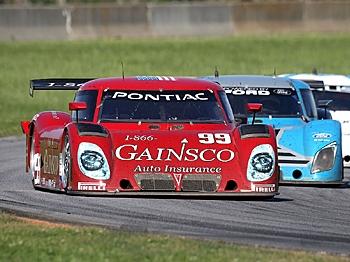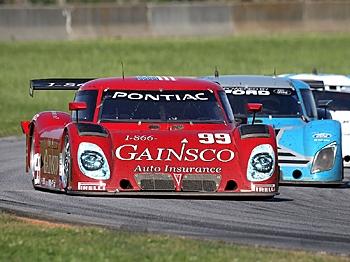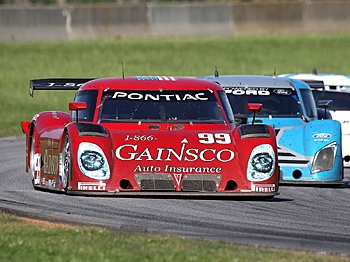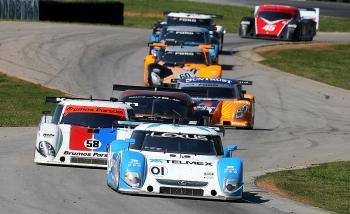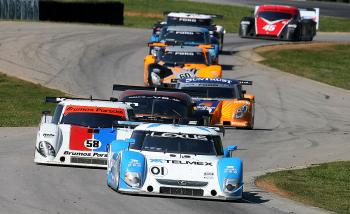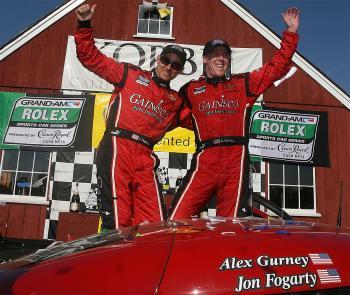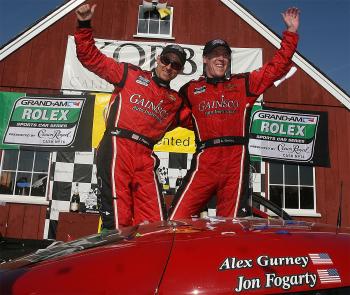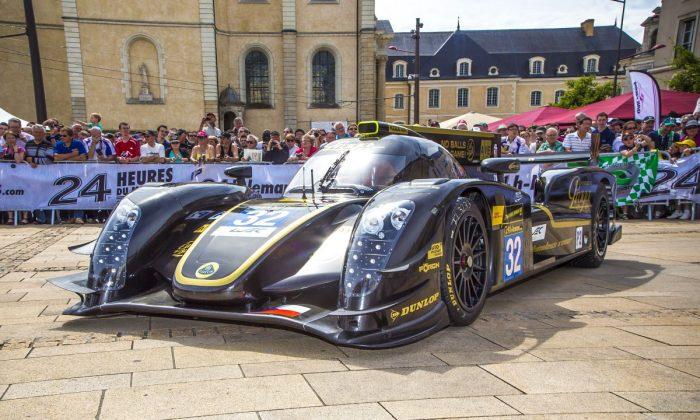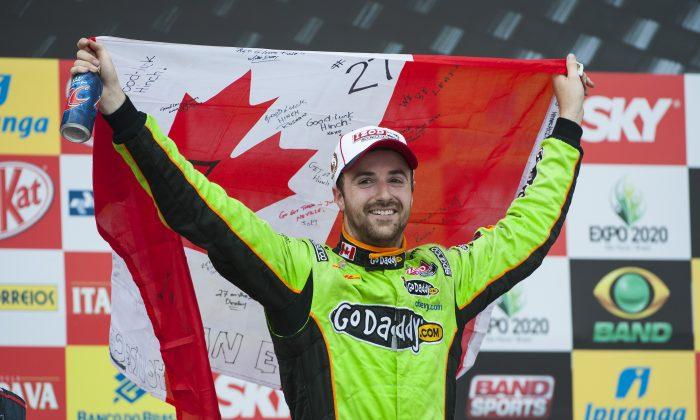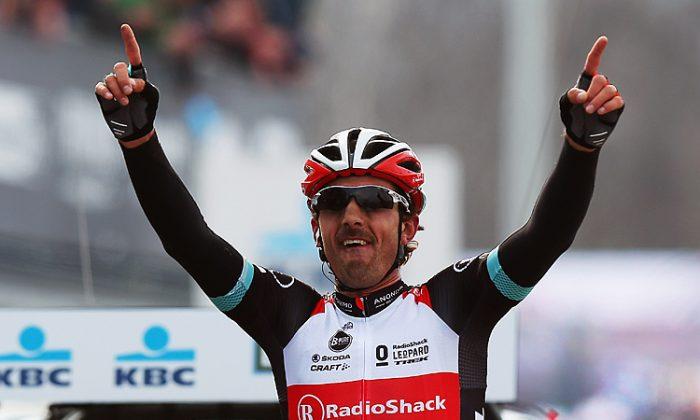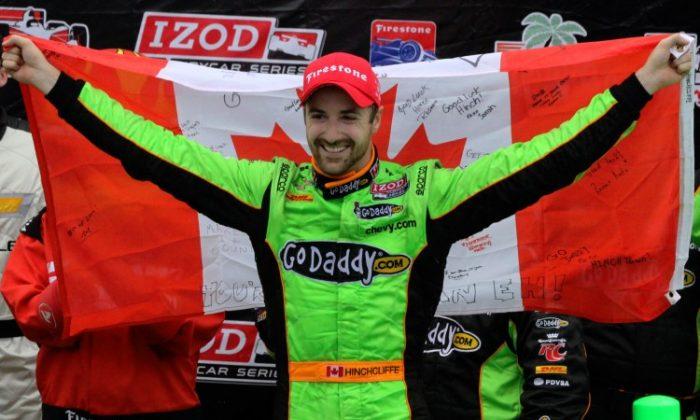Gurney made excellent use of slower traffic to sneak past Valiante, and then, after a masterful restart, managed to hold off Valiante for the final few laps of flat-out racing.
In GT, Robin Liddel in the Stevenson Motorsports Pontiac GXP.R beat Paul Edwards’ Banner Racing Pontiac GXP.R after an intense battle, giving Pontiac power plants a win in both classes.
Grand Am Sports Car Racing
The Grand-Am Rolex Sports Car Series, like the American Le Mans Series, features prototypes—pure racing cars, purpose built for the series—along with Grand Touring, or GT, cars—high-performance versions of production cars. Five constructors are approved to produce Grand Am prototypes: Riley, Dallara, Coyote, Crawford and Lola. Teams may use a wide variety of engines: Ford, Pontiac, Lexus, Porsche (both flat-6 and V-8) and Honda. Grand Am rules are more limiting than ALMS regulations, intending to keep costs lower and reliability higher, so that more teams can participate.
Similarly, Grand Am’s GT class allows fewer modifications than ALMS; Grand Am rules are almost identical to IMSA GT3 Cup rules, so Porsche Cup cars can participate.
Having multiple classes of cars on the track at the same time adds to racing excitement, as the faster prototypes have to maneuver through the slower GT cars. This creates more opportunities for overtaking and keeps races closer.
Grand Am racing attracts some of the biggest teams and best-known names in racing: racing legends like Penske, Brumos, and Ganassi Racing compete here, and drivers from NASCAR, IRL, and ALMS also race in Grand Am.
As in ALMS, each car must have at least two drivers, and each driver must complete at least thirty minutes behind the wheel in every race.
The Bosch 250 was the second race on the Grand-Am schedule, three months after the season opening 24 Hours of Daytona back in February. The season kicks into high gear now with three races in the next four weeks.
Fierce GT Competition
The racing was hard right from the green flag. Only ten laps in, GT championship leader Justin Marks rammed the spinning Mazda of Emil Assentato, putting both drivers out of the race.
Eventually the Pontiacs of and Edwards and Liddel took the class lead, with the Mazda RX-8 of Sylvain Tremblay unable to keep up.
After battling for the better part of two hours, Edwards made a slight mistake, dropping a wheel into the grass while rounding a corner. Liddel immediately seized the advantage. Edwards tried too hard to catch up, and went off completely at the next turn.
Liddel never surrendered the lead after that, bringing his privateer Pontiac home ahead of the factory-supported sister car of Edwards. The win left Liddel and co-driver Andrew Davis tied with Edwards and co-driver Kelly Collins in the GT Championship points race.
Strategy, Luck, and Speed: the Battle for the Prototype Win
The Verizon Penske Porsche, the Gainsco Bob Stallings Pontiac, the SunTrust Ford, the Brumos Porsche, the Telmex Ganassi Lexus, and the Michael Shank Ford battled back and forth, swapping spots due to traffic, driver error, and pit stops, but none of the leaders showed dominance—each of the top six cars had a shot at winning.
Fuel Pressure
With fifty-six minutes left, all the cars had made their final pit stops and were ready to finish the race. The order was Valiante in the Shank Ford, Gurney in the Gainsco Pontiac, Scott Pruett in the Telmex Lexus, and Max Angelelli in the SunTrust Ford.
About ten minutes later, the engineers started crunching numbers, and in all the pits except Brumos, the answer was the same; none of the leaders had enough fuel on board to finish the race.
The order went out to conserve fuel. However, the drivers had to not only conserve fuel, they had to protect and hopefully improve their positions. If there was a full-course caution, whoever was in the lead would be first into, and probably out of, the pits. If the race finished under caution, then whoever was in the lead would win, regardless if he would have run out of gas otherwise. So the drivers had to balance driving conservatively when they could, with driving extra aggressively whenever possible, hoping that all the other drivers were in the same situation.
With thirty-three minutes to go, race leader Michael Valiante came up on a pair of GT Porsches battling for position. Behind him, Alex Gurney was watching the scene unfold. When Valiante hesitated, making sure the other drivers saw him approaching, Gurney rocketed by on the outside edge of the track, pinning Valiante behind the slower cars.
Valiante did his best to retake the lead, but the two cars were too evenly matched; unless Gurney made a mistake, Valiante couldn’t get by.
Sprint Finish
As the minutes ticked by, the leading teams worried more and more, wondering who would be first to crack, and head to the pits for fuel. But fate intervened in the form of an engine fire in Andy Wallace’s Childress-Howard Pontiac Crawford, which brought out a yellow flag. With immense relief, the leaders came in for fuel. Now the race would be an all-out sprint for the finish.
The restart came with five minutes left. Alex Gurney made an excellent restart, with Michael Valiante just behind him. Valiante challenged going into the first turn, but Gurney held him off.
Scott Pruett was a bit slow off the mark, then, as he was catching the leaders, David Donohue in the Brumos Porsche got too excited and rammed Pruett from behind, pushing Pruett wide in the first turn. Max Angelelli in the SunTrust car, tried to take advantage by cutting underneath Pruett, but there wasn’t enough room. The two collided, with Angelelli spinning off one side of the track and Pruett sliding off the other. Both drivers were able to limp back to the pits, so the race stayed green.
This was only the second win for Gurney, co-driver Jon Fogarty, and Gainsco/Bob Stallings Racing since the team won the championship in 2007. The win puts them second in the Championship points standings, only one point behind the Brumos Porsche of Darren law and David Donohue.
The next race in the series will be the Verizon Wireless 250 at New Jersey Motorsports Park on Sunday, May 3, 2009. Please visit the New Jersey Motorsports Park web site for more information.
